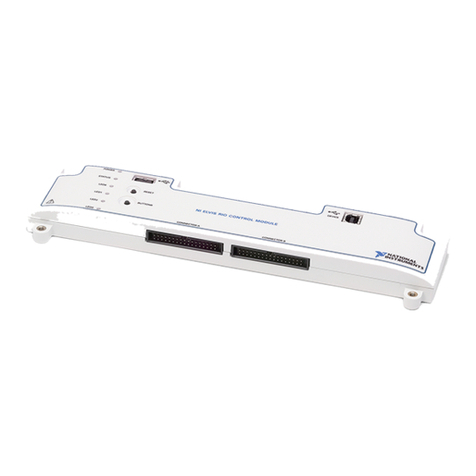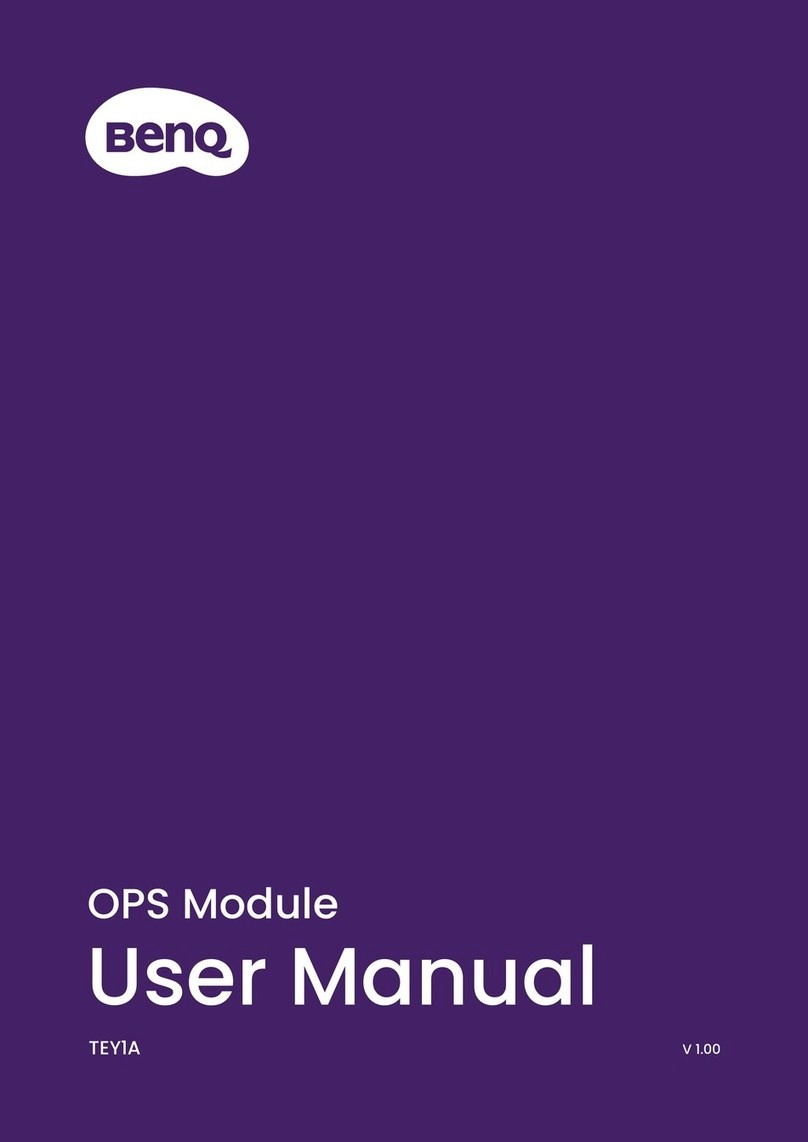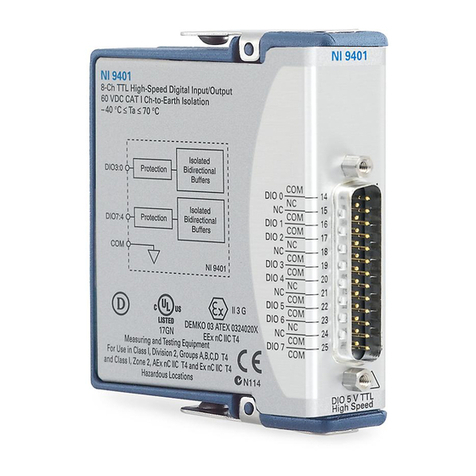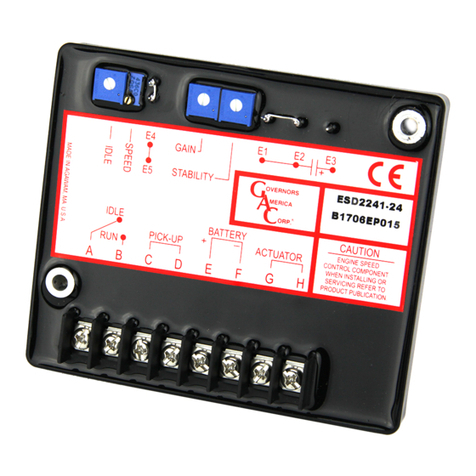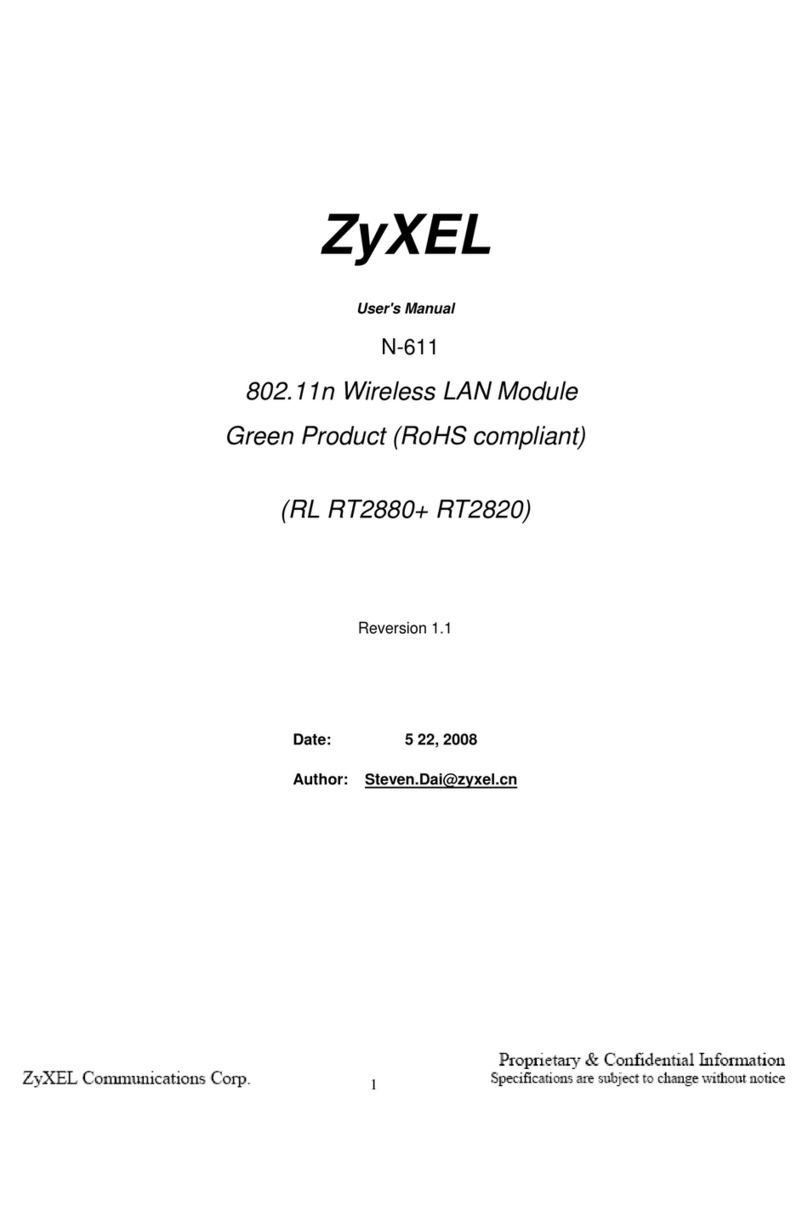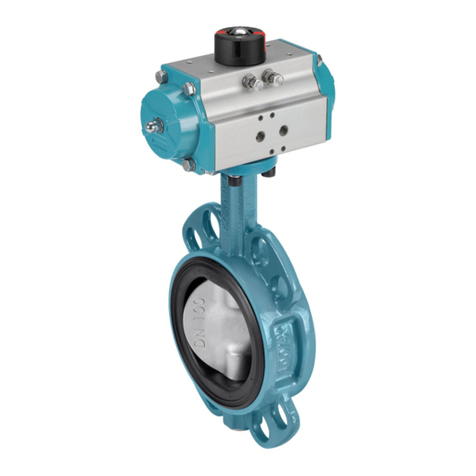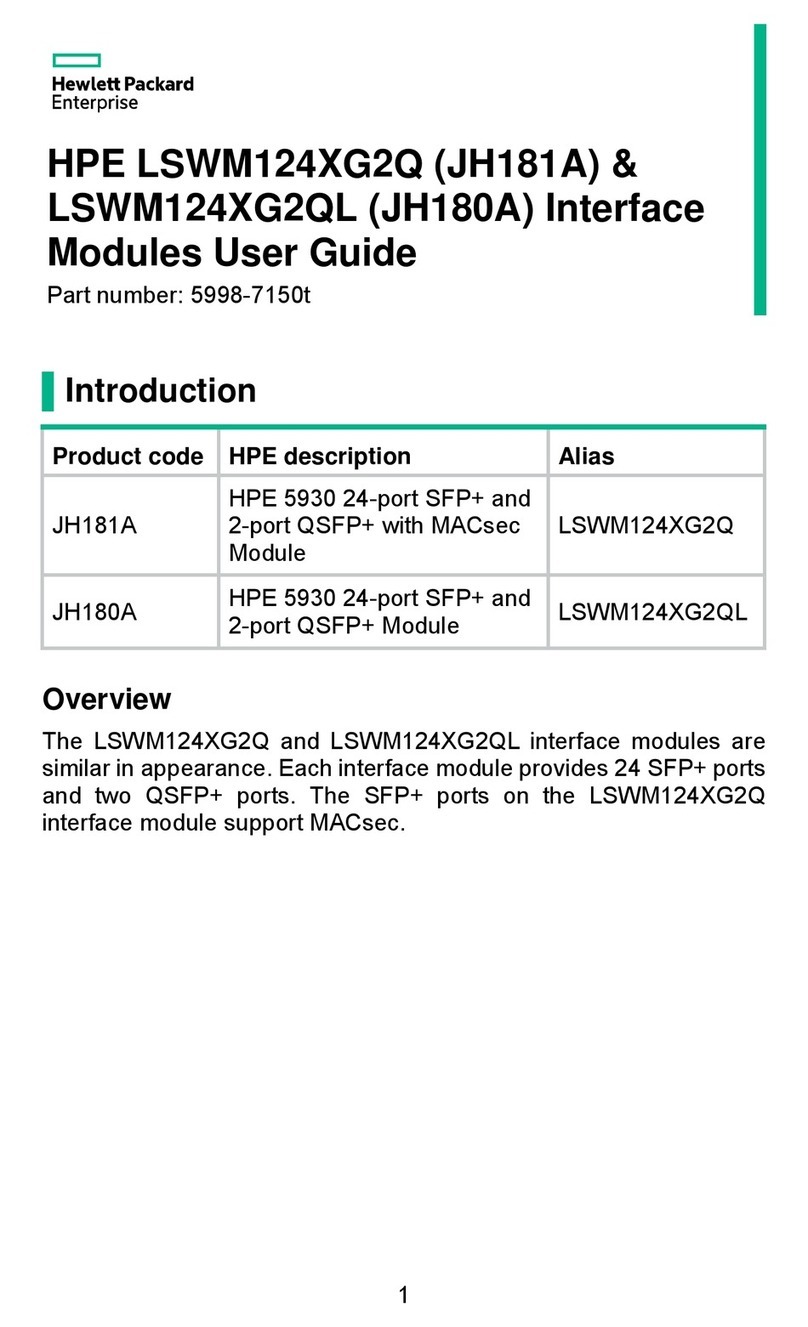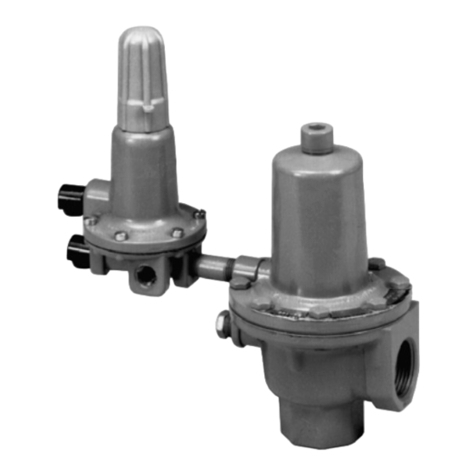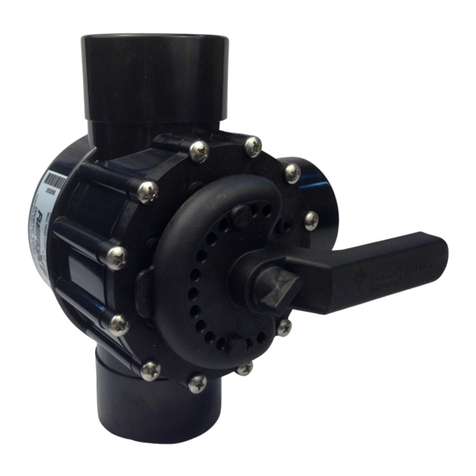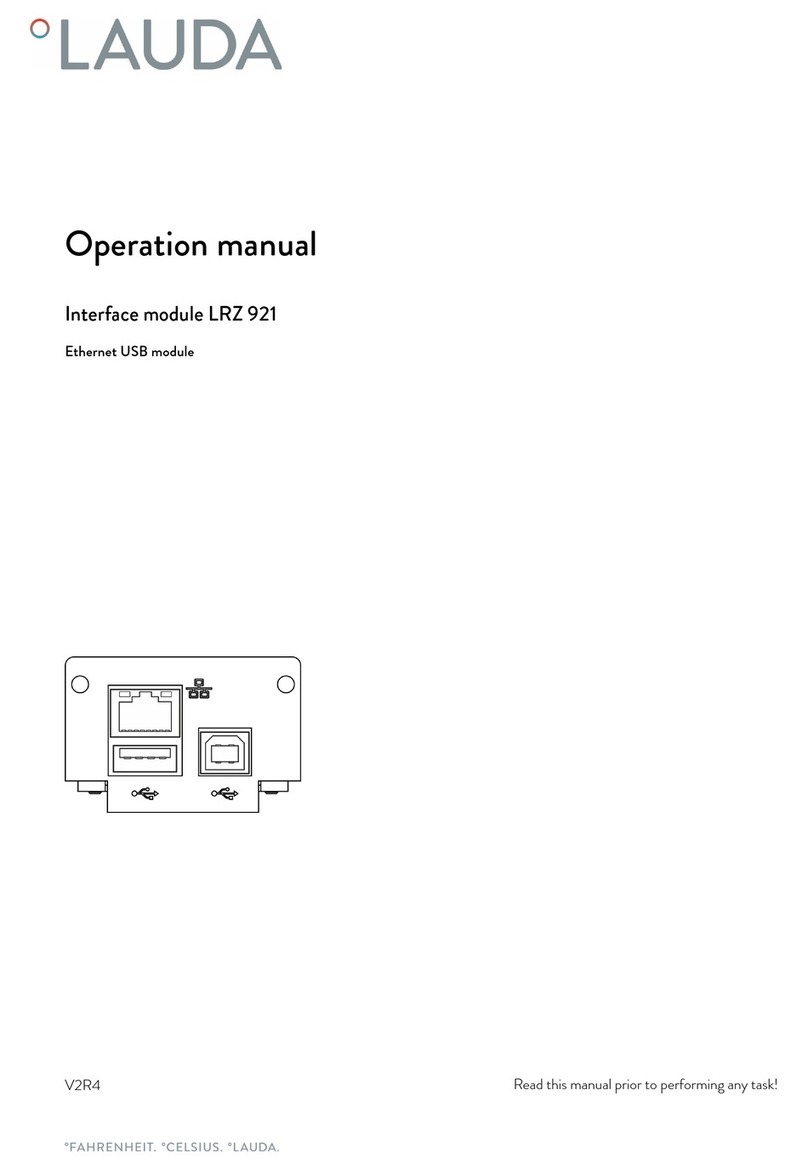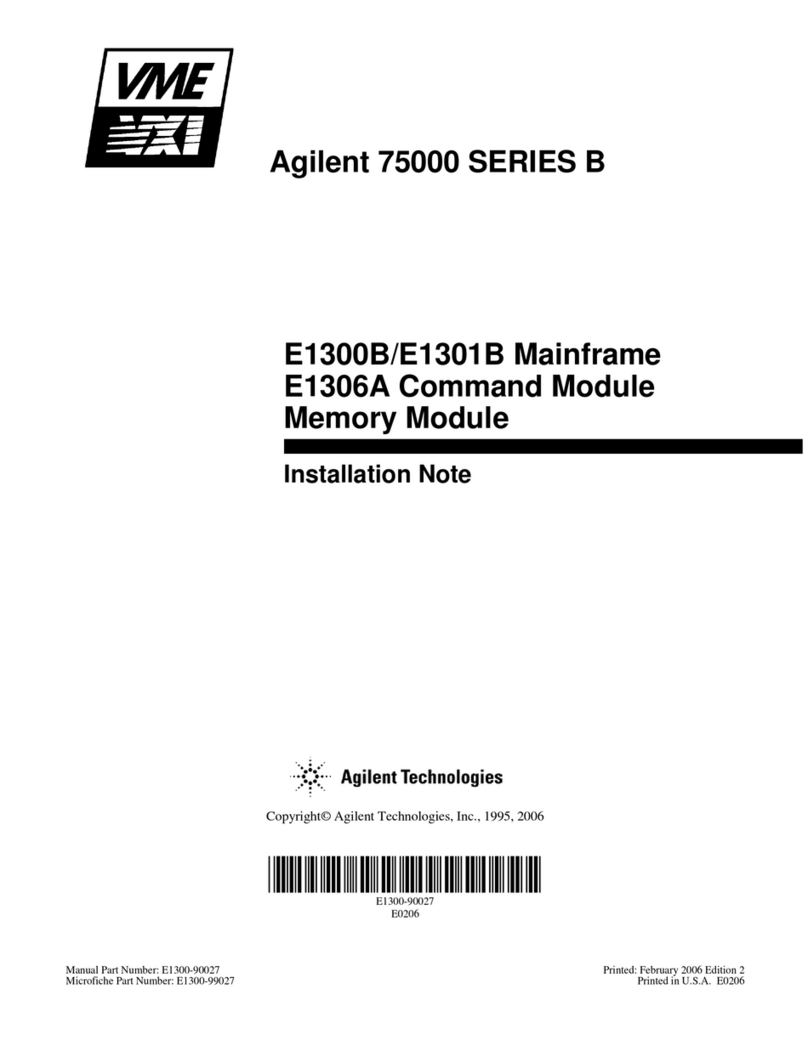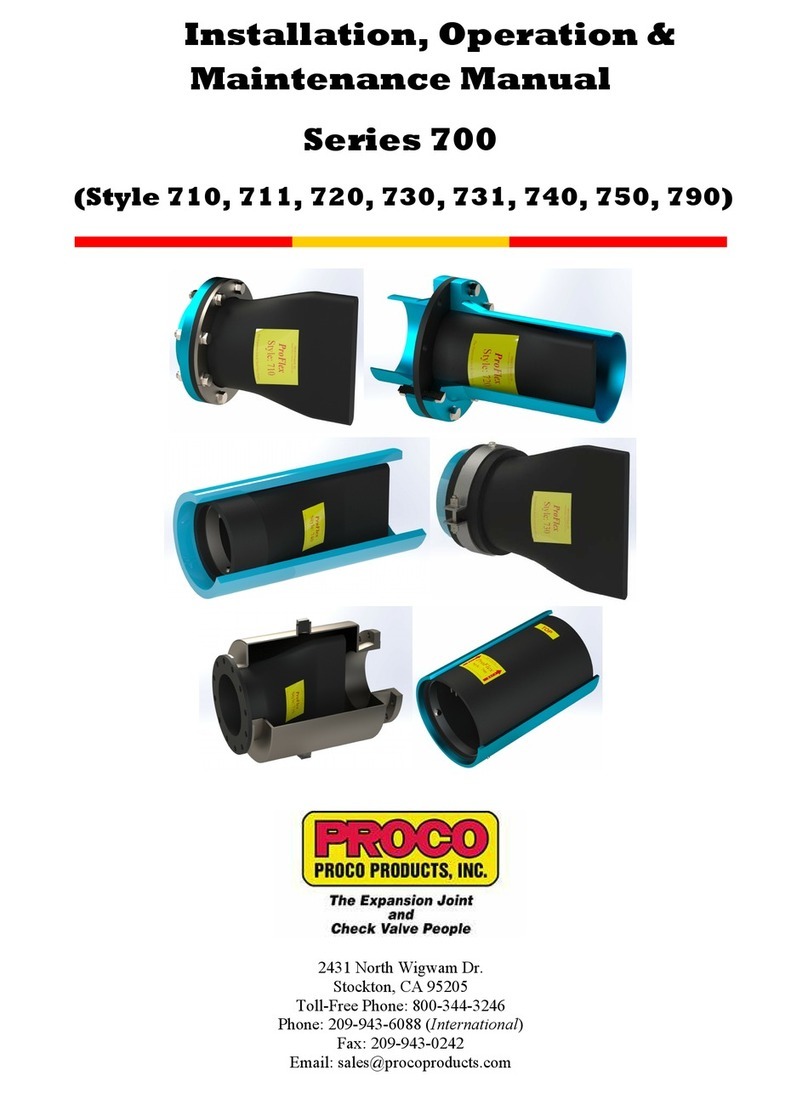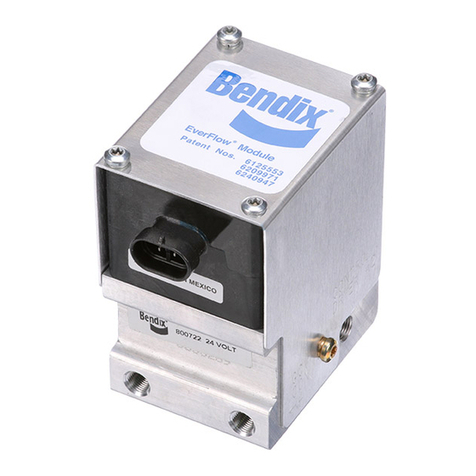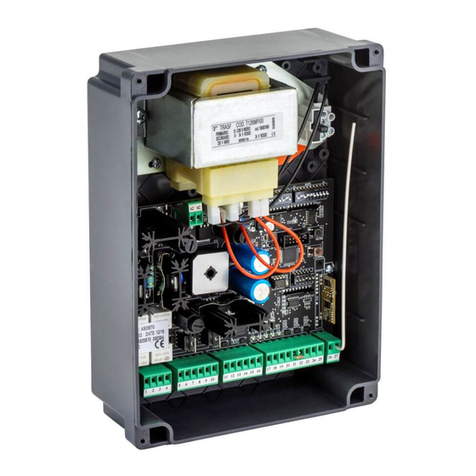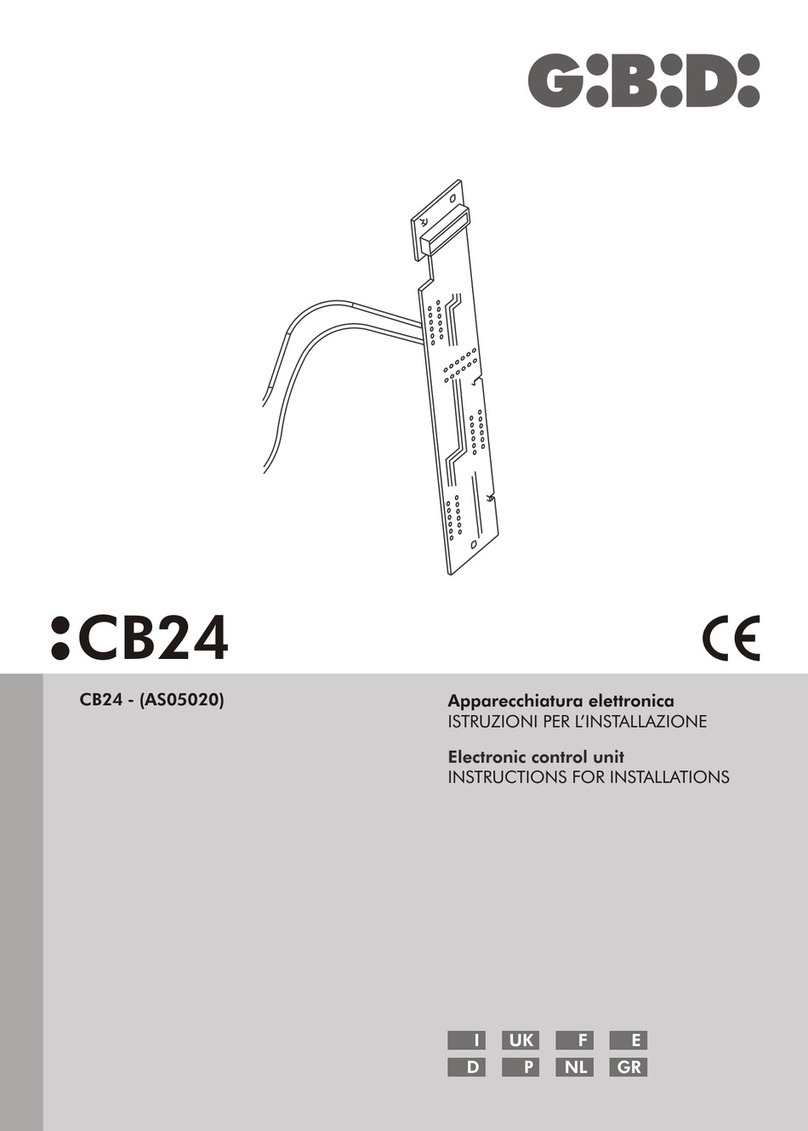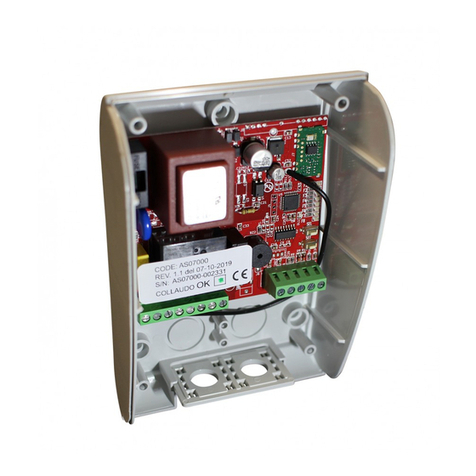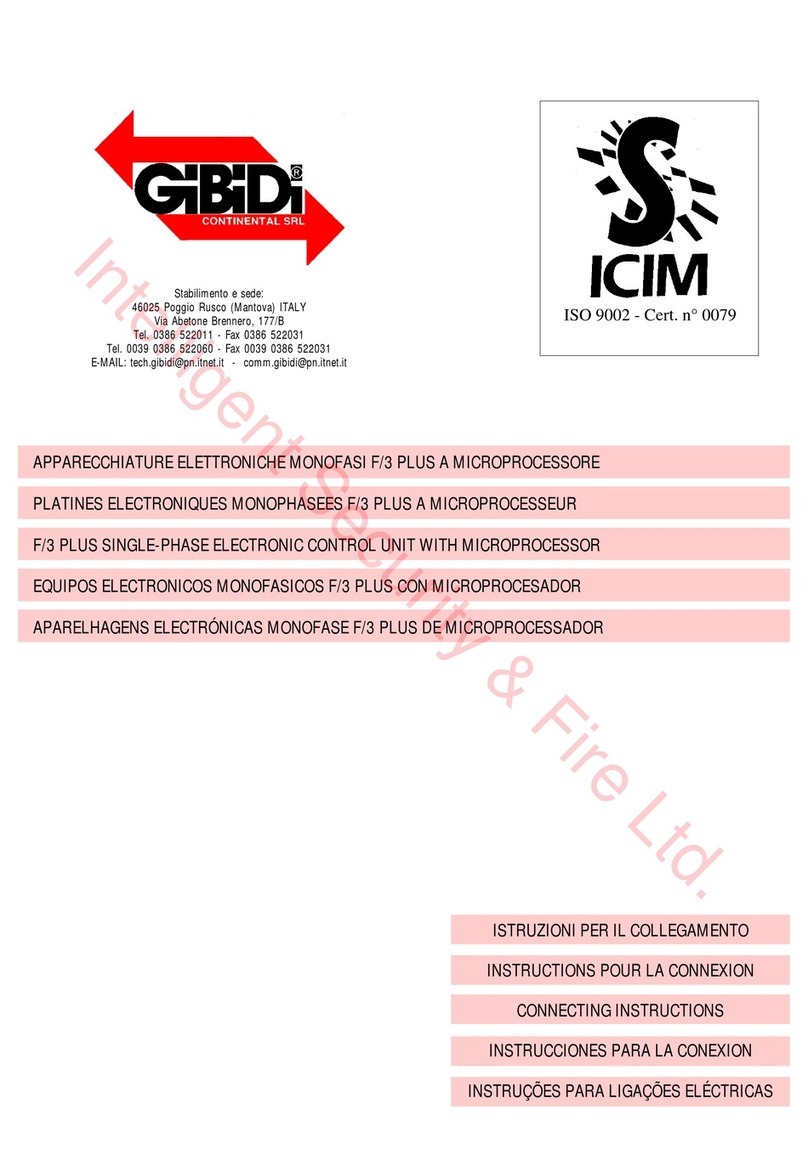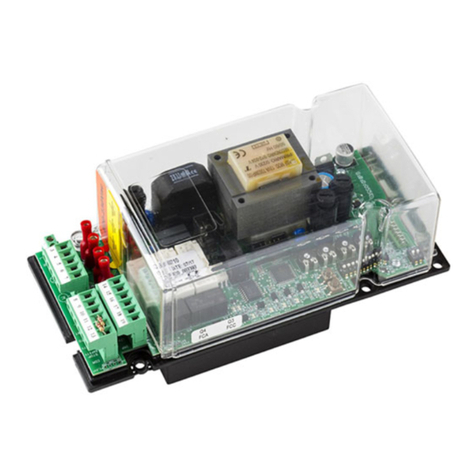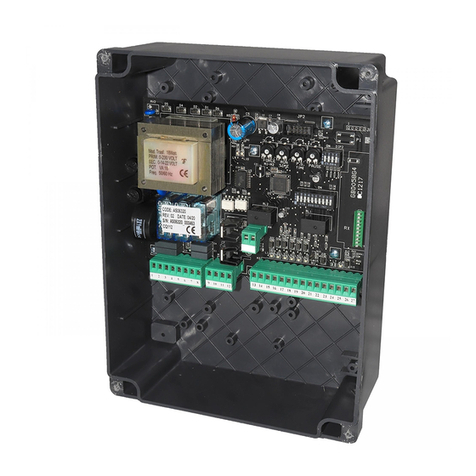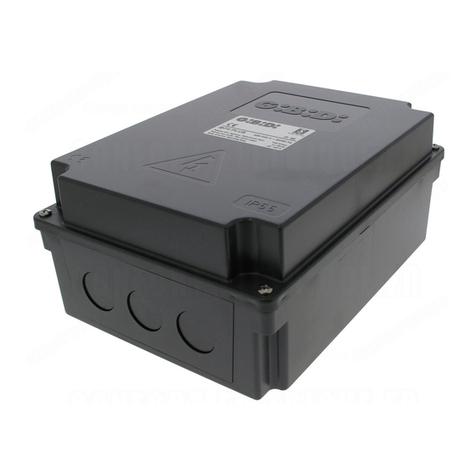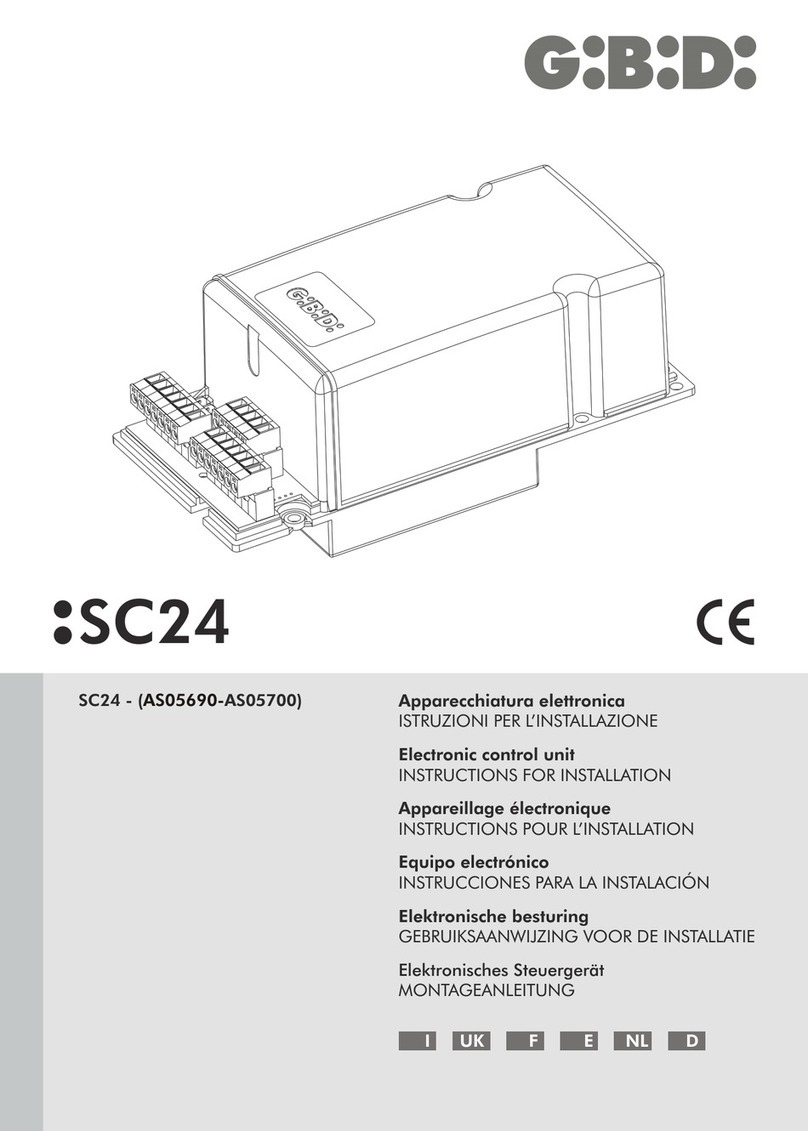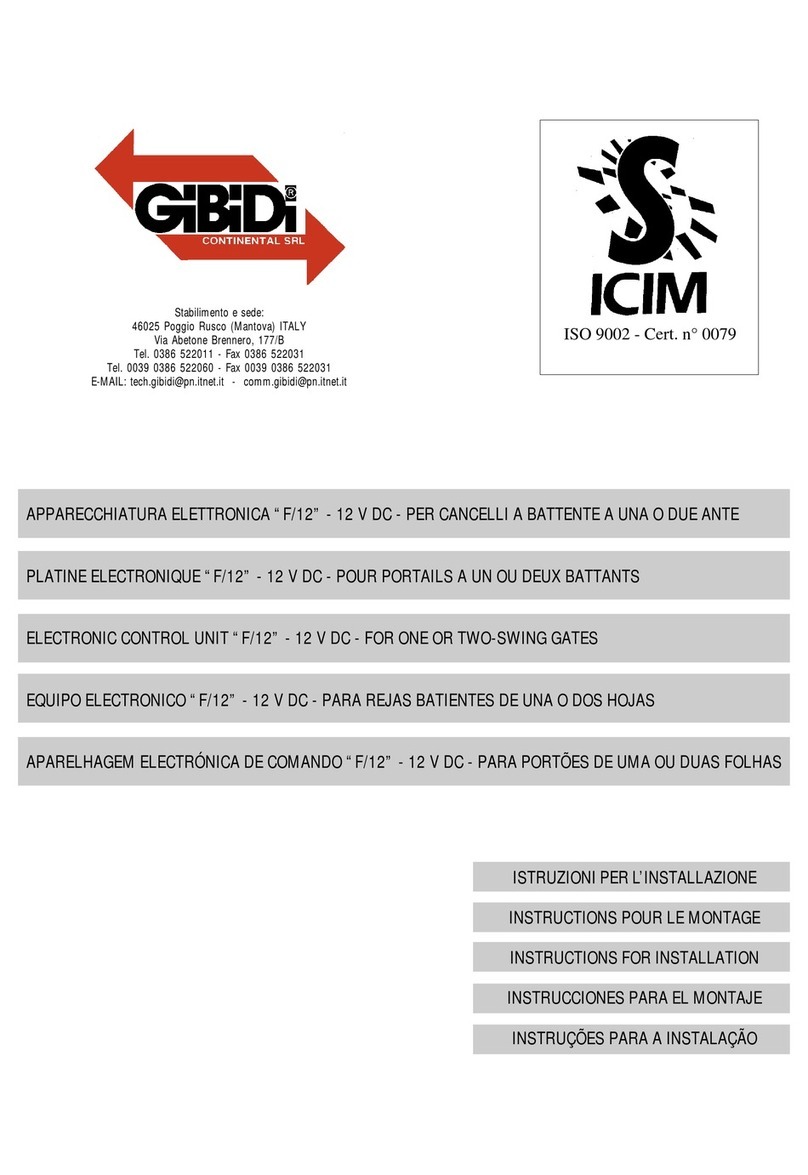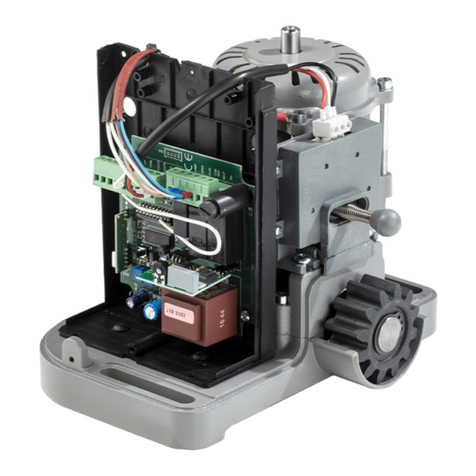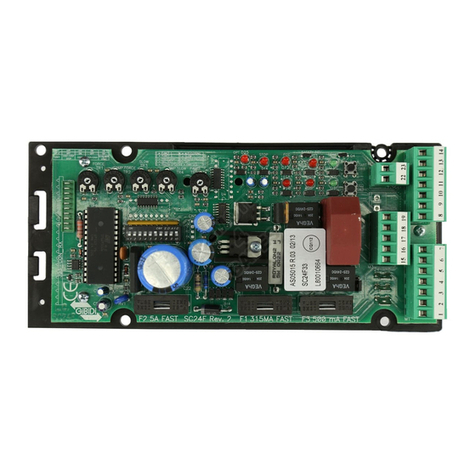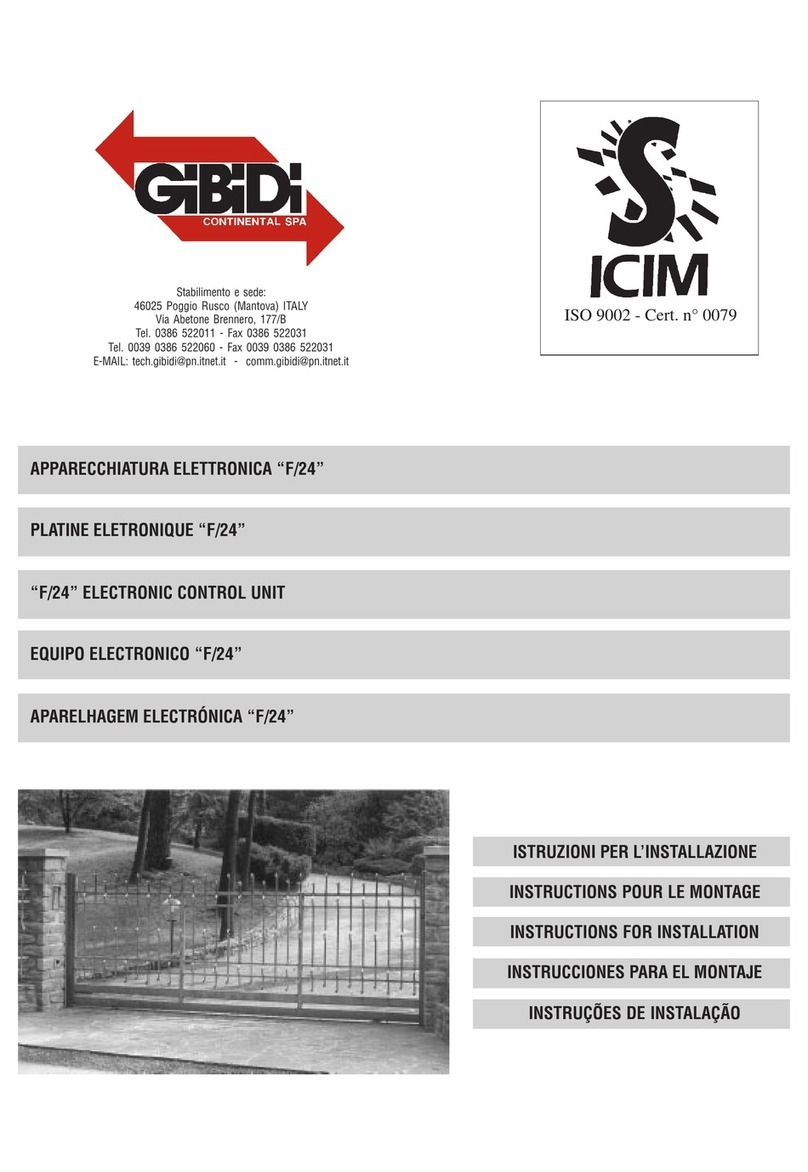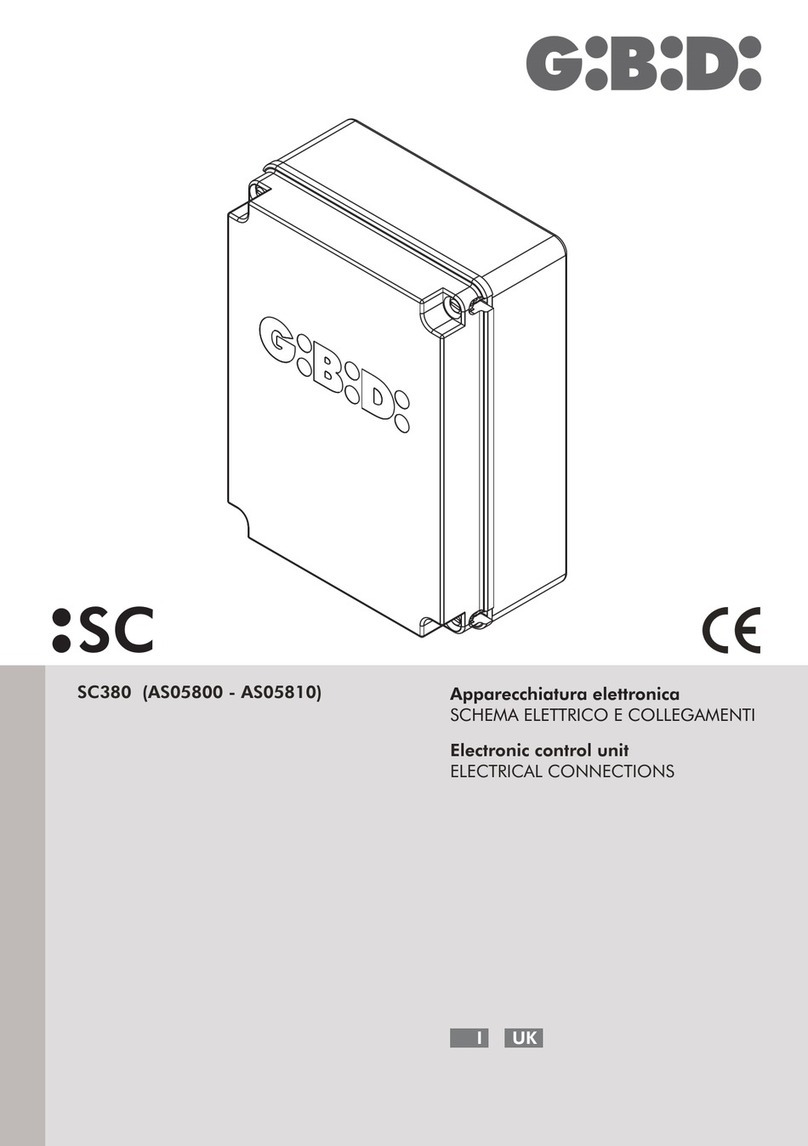
Movements made during the learning with 2 motors:
ŸMotor 2 closes until running into the limit switch or until receiving a START impulse.
ŸMotor 1 closes until running into the limit switch or until receiving a START impulse.
ŸPause of 1 second.
ŸMotor 1 opens until running into the limit switch or until receiving a START impulse.
ŸMotor 2 opens until running into the limit switch or until receiving a START impulse.
ŸPause of 1 second.
ŸMotor 2 closes until running into the limit switch or until receiving a START impulse.
ŸMotor 1 closes until running into the limit switch or until receiving a START impulse.
ŸPause of 1 second.
ŸMotor 1 opens, the first START command causes the beginning of the decelerated motion, the following
START command or the opening limit switch causes the end of motor 1 motion in opening.
ŸMotor 2 opens, the first START command causes the beginning of the decelerated motion, the following
START command or the opening limit switch causes the end of motor 2 motion in opening.
ŸPause of 1 second.
ŸMotor 2 closes, the first START command causes the beginning of the decelerated motion, the following
START command or the closing limit switch causes the end of motor 2 motion in closing.
ŸPause of 1 second.
ŸMotor 2 closes, the first START command causes the beginning of the decelerated motion, the following
START command or the closing limit switch causes the end of motor 2 motion in closing.
ŸEnd of learning, the LED L9 and the flashing light signal that the learning has been completed and turn off.
Movements made during the learning with 1 motor:
ŸMotor 1 closes until running into the limit switch or until receiving a START impulse.
ŸPause of 1 second.
ŸMotor 1 opens until running into the limit switch or until receiving a START impulse.
ŸMotor 1 closes until running into the limit switch or until receiving a START impulse.
ŸMotor 1 opens, the first START command causes the beginning of the decelerated motion, the following
START command or the opening limit switch causes the end of the motion of motor 1 in opening.
ŸPause of 1 second.
ŸMotor 1 closes, the first START command causes the beginning of the decelerated motion, the following
START command or the closing limit switch causes the end of the motion of motor 1 in closing.
ŸEnd of learning, the LED L9 and the flashing light signal that the learning has been completed and turn off.
In the event of the learning procedure not work then check the signaling of LED L9.
• Power the device.
• Check that the red LEDs of the N.C. contacts are on and the green LEDs of the N.O. contacts are off.
• Check by tripping the limit switches (if used and enabled with the appropriate DIP switches) that the corresponding
LEDs go off.
• Check by passing through the photocell beam (if used and enabled with the appropriate DIP switch) that the
corresponding LED goes off.
• Remove any obstacle from the gate’s range.
• Check that the motors are locked and ready for the operation in the HALF-OPEN position.
Only in case of operation without learning and with RUN TIME trimmer not to the minimum:
• At the first command, the control unit starts an opening movement: check that the direction of gate motion
is correct. On the contrary, remove the power supply from the control unit, invert the wires of terminal M1 (position
1-3 for motor 1) (4-6 for motor 2). Supply power again and give START command.
• During the operation of the gates, turn the FORCE trimmer anti-clockwise until the desired force/speed is obtained.
13 - RUN TIME LEARNING PROCEDURE
ŸThe «RUN TIME» trimmer must be at the minimum to be able to do the learning procedure. With any adjusting
different from the minimum, the working time, both in opening and closing, is determined by the «RUN TIME»
trimmer and the slow-down will be disabled.
ŸThe breaking or interrupting of any device (PED, PHOTO, STOP/SAFETY) during the learning phase causes
the interruption and the exit from the learning cycle and it is necessary to repeat it.
ŸDuring the learning cycle, the WARNING LIGHT is off and it will be briefly on after receiving a START
command.
ŸThe operators motion, during the learning procedure, occurs with the force set on FORCE trimmer.
ŸSliding gate operators MUST have opening and closing limit switches. All the other types of motor
must have the limit switches or the mechanical stops on the ground.
ŸSliding gate operators must have the <<LEAF DELAY TIME>> trimmer set to the minimum.
ŸThe run time learning is not compatible with TOP EVO operators with hydraulic slowdown.
ŸIt is possible to make the stroke learning with the hydraulic operators. However, in case of successfully
learning, the slowdown phases in opening and closing are not always granted.
Learning procedure:
ŸUnlock the operators and set the gates HALF-WAY.
ŸLock-off the operators.
ŸCheck that there are the mechanical stops on the ground and/or on the operator in opening and closing.
ŸRemove any obstacle from the the swing area of the gates.
ŸCheck that LED L1, L2, L3, L4, L5 and L10 are on.
ŸCheck that «RUN TIME» trimmer is at the minimum.
ŸPress MEMO button for 2 seconds.
ŸLED L9 is on and remains on for 30 seconds, after which it will switch off as the control unit automatically exits
from the learning procedure.
ŸChoose within 30 seconds (LED L9 on) using the MEMO button the number of motors you have to use.
The first press of the button enables the operation with 1 motor and LED L9 blinks, the second press of
MEMO button enables the operation with 2 motors and LED L9 blinks twice.
ŸThe sequence repeats itself any time you push MEMO button.
ŸPush the button 1 (START) of the transmitter or give a START impulse from the terminal board.
Check that the movement of the motors is in the right direction (in closing at the beginning). On the contrary,
block the learning cycle with any safety device, remove the power supply from the control unit, invert the wires
of terminal M1 (position 1-3 for motor 1) (4-6 for motor 2) and repeat the procedure.
20
UK
F4 21
UK
F4





















